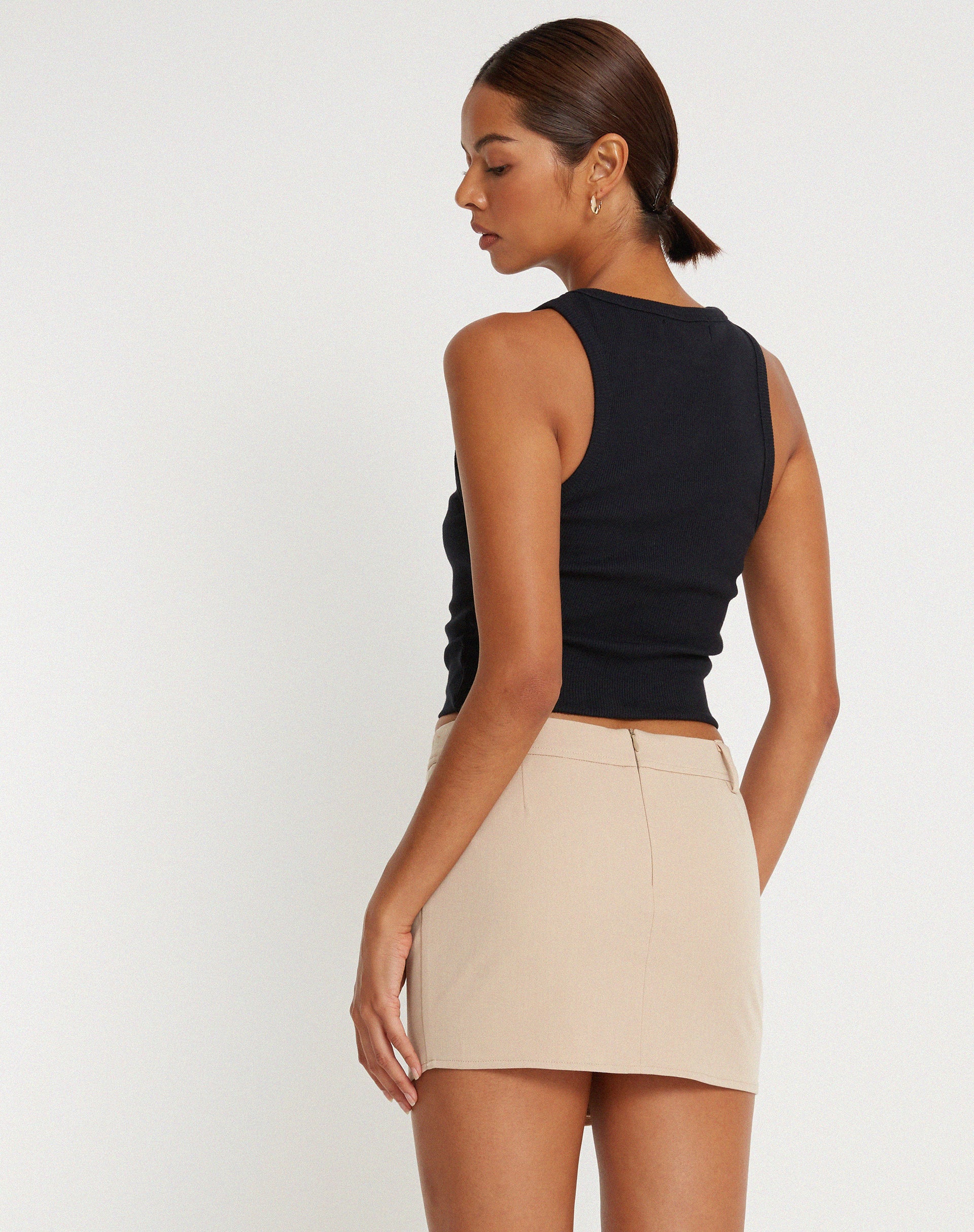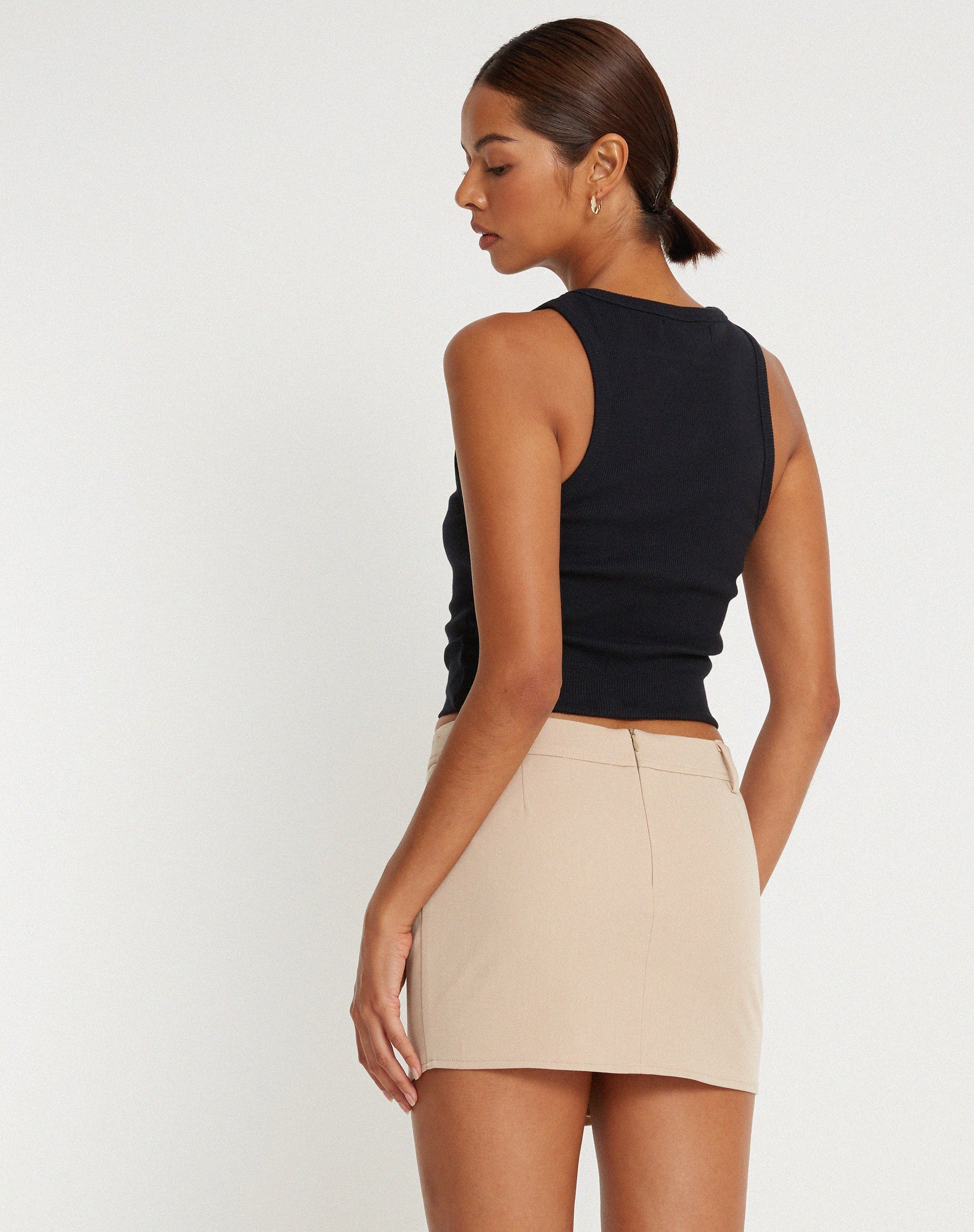How to Style a Beige Mini Skirt for Effortless Chic
The beige mini skirt stands as a testament to timeless elegance in the ever-evolving world of fashion. This versatile piece transcends seasonal trends, offering a canvas for personal expression while maintaining an air of sophisticated simplicity. When styled with intention, this wardrobe staple becomes more than just clothing—it transforms into a statement of refined taste and confident self-presentation.
The Psychology of Beige in Fashion
Color psychology reveals why beige maintains such enduring appeal in fashion circles. According to research from the Pantone Color Institute, neutral tones like beige create a sense of calm and sophistication that resonates deeply with contemporary aesthetics. The beige mini skirt specifically embodies what fashion historian Valerie Steele describes as “quiet luxury”—a concept where understatement speaks louder than overt displays of wealth. This approach to dressing aligns with modern sensibilities that value authenticity over ostentation. The beauty of this particular garment lies in its ability to serve as both foundation and focal point, adapting to the wearer’s mood and occasion with remarkable flexibility. When we examine the evolution of minimalist fashion through institutions like the Fashion Institute of Technology, we see how neutral pieces have consistently maintained relevance across decades, proving that true style isn’t about chasing trends but rather about understanding what works for the individual.

Architecting Your Outfit: The Foundation Principles
Building an outfit around your beige mini skirt requires understanding fundamental principles of balance and proportion. Fashion educators at Central Saint Martins often teach that successful styling begins with recognizing the garment’s role within your overall silhouette. The mini skirt naturally draws attention to the lower body, making it crucial to consider how other elements complement this focus. Texture plays a particularly important role—pairing the smooth surface of a well-tailored skirt with chunky knitters or delicate silks creates visual interest without overwhelming the senses. As stylist Rachel Zoe famously noted on her social media platforms, “The magic happens in the mix of textures, not just colors.” This philosophy becomes especially relevant when working with neutral palettes where variation in material creates depth and dimension. The beige mini skirt serves as your foundation, allowing you to experiment with different tops, layers, and accessories while maintaining a cohesive look that feels both intentional and effortless.
Seasonal Transformations: Adapting to Climate and Occasion
One of the most remarkable qualities of the beige mini skirt is its year-round versatility. During warmer months, pairing it with lightweight blouses and sandals creates breezy daytime looks, while transitional seasons call for layered approaches with tights and boots. The wisdom of this adaptable approach finds support in the teachings of Tim Gunn, who frequently emphasizes the importance of “making it work” across different contexts. Winter styling presents particular opportunities for creativity—combining your skirt with opaque tights, knee-high boots, and chunky sweaters maintains the piece’s relevance even in colder climates. This practical adaptability means your investment continues delivering value throughout the year, maximizing both style and financial practicality. The concept of cost-per-wear, often discussed by financial fashion experts, becomes particularly favorable with such versatile pieces, as their frequent use significantly reduces the actual expense of each wearing.

The Art of Strategic Accessorizing
Accessories transform the beige mini skirt from basic to extraordinary. The neutral canvas provides the perfect backdrop for statement pieces that reflect personal style. Handbag selection offers a prime example—while neutral tones create harmony, contrasting colors introduce dynamic energy. This principle finds validation in the design philosophies shared by accessories designers like Clare V., who advocates for “intentional contrast” in creating visually compelling outfits. Footwear represents another critical consideration, with options ranging from sophisticated pumps for professional settings to rugged boots for casual outings. The psychology behind these choices connects to what social researchers call “non-verbal fashion communication”—the way our clothing choices silently convey messages about our personality and intentions. Jewelry selections should follow similar principles of balance, with delicate pieces complementing the skirt’s simplicity while bolder statements create focal points that draw the eye upward, balancing the visual weight distribution of your ensemble.
Color Theory Applications in Styling
Understanding color relationships elevates your styling beyond simple matching. The beige mini skirt belongs to the neutral family, meaning it pairs harmoniously with virtually every color on the spectrum. Monochromatic schemes using varying shades of beige, cream, and tan create sophisticated, elongated silhouettes—a technique frequently employed by fashion insiders and documented in style publications like Vogue. Complementary colors introduce energy and visual interest, while analogous schemes maintain calm cohesion. The science behind these combinations stems from the work of color theorists like Johannes Itten, whose principles continue influencing fashion education today. When building your wardrobe around this versatile piece, consider creating what stylists call a “color story”—a curated selection of tops, layers, and accessories that work together seamlessly. This approach not only simplifies dressing but also ensures that each new acquisition enhances your existing collection, promoting both stylistic and financial efficiency.

Building a Capsule Wardrobe Around Your Centerpiece
The concept of capsule dressing finds its perfect expression through the beige mini skirt. By serving as a foundational element, this piece enables numerous outfit combinations from a limited selection of items. The economic benefits of this approach are substantial—investing in quality basics reduces the need for constant shopping while ensuring you always have appropriate options available. Fashion economists note that capsule wardrobes can reduce clothing expenses by up to 40% annually while simultaneously decreasing decision fatigue. The environmental impact shouldn’t be overlooked either, as a carefully curated collection naturally leads to more conscious consumption patterns. When building your capsule, consider including pieces that work across multiple contexts—a well-tailored blazer transitions from office to evening, while quality knitwear provides comfort and style in various settings. This strategic approach to wardrobe construction represents what industry experts call “style intelligence”—the ability to maximize both aesthetic and practical value from your clothing investments.
The journey with your beige mini skirt becomes a personal exploration of style identity—a process of discovering how this simple garment can express the complexity of your individual aesthetic. Beyond following trends or rules, true style emerges from understanding what makes you feel confident and authentic. The skirt serves not as a constraint but as a catalyst for creative expression, adapting to your life while maintaining its essential elegance. This relationship between garment and wearer represents fashion at its most meaningful—where clothing becomes an extension of self rather than just a covering.







